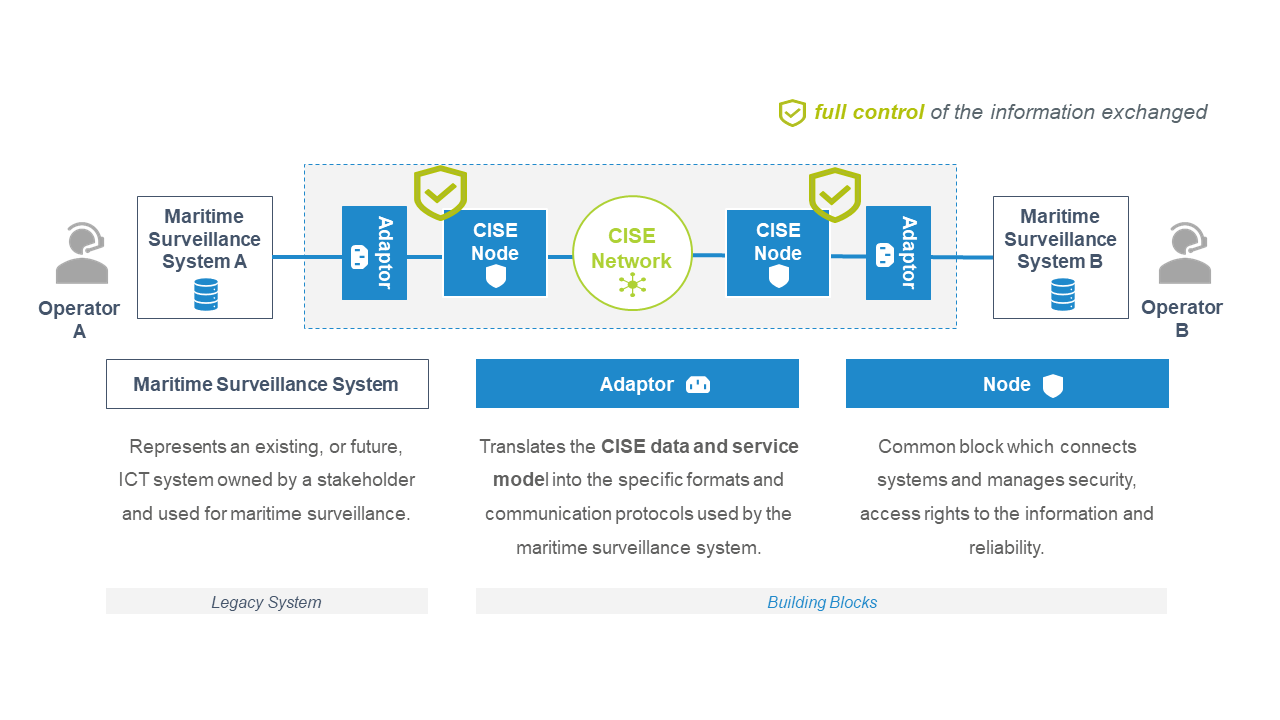How does CISE work technically?
CISE provides the technical standards and building blocks to facilitate the information exchange between surveillance ICT systems, hereafter called Legacy Systems. In CISE, legacy systems are owned by a stakeholder and can host information that could be useful for other stakeholders. To exchange information in CISE, stakeholders need to use two building blocks: a CISE Node and an adaptor.
The CISE Node is a common software component for all the partners connected to the network, but the management is not centralised. CISE is based on a decentralized architecture with a point-to-point exchange of information, i.e., from legacy system to legacy system, which allows a stakeholder to be confident about data access and control. The CISE Node uses the CISE Data Model and the CISE Service Model (standard communication protocol) to exchange the information from/to the legacy systems.
A stakeholder uses an Adaptor to translate the specific formats and communication protocols used by its Legacy System to the standard data format and communication protocol, i.e., CISE Data and Service Models used in the CISE Node. Through the CISE Node, information can be shared with other CISE Nodes in the CISE Network.

To learn more, please see the technical specifications section: emsa.europa.eu/technical-specifications.html
